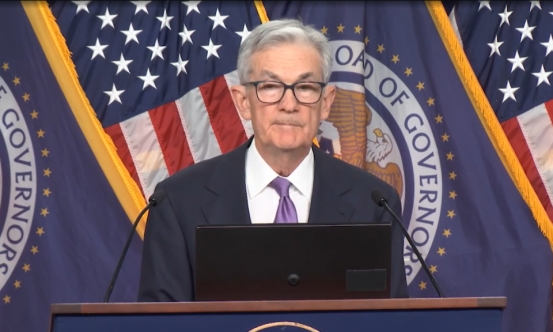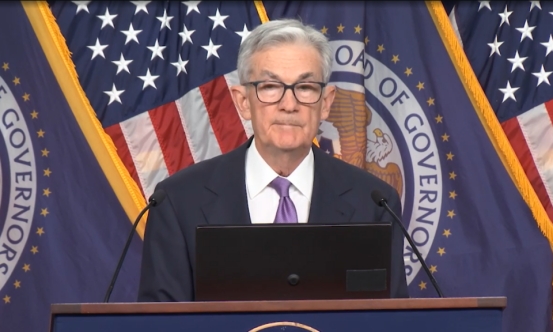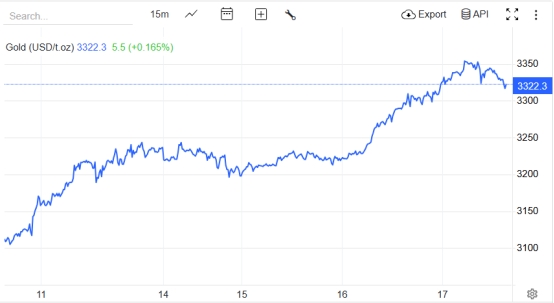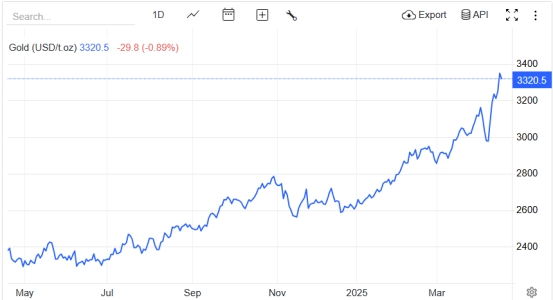Powell's "no rescue" declaration set off the market! The signal of the Fed's policy shift is evident
- 2025年4月21日
- Posted by: Macro Global Markets
- Category: News

Powell's "no rescue" declaration set off the market! The signal of the Fed's policy shift is evident

This statement is in sharp conflict with the market's expectation that the Federal Reserve will cut interest rates by 90 basis points in the second half of 2025. The three major U.S. stock indexes plummeted in a single day, with the Dow Jones Industrial Average plunging 700 points and the Nasdaq falling more than 4%. Technology stocks became the hardest hit area of selling, and Nvidia's market value evaporated by 1.3 trillion yuan in a single day. At the same time, funds poured into the gold market at an accelerated pace, and the spot gold price broke through $3,350 per ounce, with a single-day increase of more than 3%, setting a record high, and then retreated.

The risk of "stagflation" has become the Fed's primary concern
For the first time, Powell publicly acknowledged the possibility of "rising unemployment and inflationary pressure coexisting", pointing out that Trump's tariff policy may prolong the inflation cycle through supply chain disruptions. Data shows that although the New York Fed manufacturing index rebounded to -8.1 in April, the input cost index soared to 50.8 (the highest since August 2022), and the product price index rose to 28.7 (a two-year peak), directly pointing to the transmission effect of tariff policies on prices. The Goldman Sachs model predicts that if tariffs take full effect, core PCE inflation may exceed 3.5% in Q2 and may rise further to 4% in Q3.
The “Federal Reserve Put Option” has completely failed
In response to the market's fantasy of "policy support", Powell made it clear that "the market needs to digest the uncertainty on its own" and emphasized that the Federal Reserve will prioritize controlling inflation rather than stimulating growth. This stance contrasts with the "temporary inflation" view of Federal Reserve Board Governor Waller, highlighting policymakers' cautious attitude in the face of stagflation risks. Affected by this, the US dollar index fell 0.89% to 99.27 in a single day, approaching a three-year low. The 10-year US Treasury yield fell below 3.5%, and the market's pricing of interest rate cut expectations was lowered from 90 basis points to 75 basis points.
Fiscal policy risk exposure increases
Powell rarely blamed the federal debt for being "unsustainable," pointing out that politicians' focus on cutting domestic discretionary spending (which accounts for only 12% of federal spending) is "the wrong direction" and that the real problem lies in Medicare, Social Security and interest payments. This statement resonates with the Trump administration's tariff policy. The market is worried that fiscal expansion and supply chain disruptions will exacerbate the "policy dilemma", and gold's status as a "de-dollarization" tool will be further strengthened.
2. The gold market ushered in an "epic" market
Institutional and retail investors increase their positions simultaneously
SPDR Gold ETF's holdings increased by 4.02 tons to 957.17 tons on April 17. The Shanghai Gold ETF Fund has risen 7.47% in the past week, with net capital inflows exceeding 48 million yuan. COMEX gold inventories fell by 12.28 tons to 1,356.66 tons in a single day, reflecting a surge in demand for physical delivery. It is worth noting that central bank gold purchases continue to support gold prices. In 2024, global central banks' net gold purchases reached 1,136 tons, a record high. The Goldman Sachs model shows that if the average monthly gold purchase remains at 110 tons, the gold price may reach US$3,700 by the end of 2025.
Technical breakthrough of key resistance
The gold daily moving average is in a bullish arrangement, the price stands firmly above the 20-day moving average, and the volume is well coordinated. The support level on the hourly chart moved up to $3333 and the resistance level broke through to $3365. If it breaks through $3365, the next target will be $3380-3400.

Risk of policy shift
If the Fed postpones its rate cut (for example, if it sends a hawkish signal at its June meeting), a rebound in the U.S. dollar could cause gold prices to fall back by 10%-15%, with the target at $3,250. The Bank of Canada will announce its interest rate decision today. If it suspends rate cuts, it may further weaken expectations of a rate cut by the Federal Reserve.
Geopolitical mitigation risks
The Russia-Ukraine negotiations or the cooling of the situation in the Middle East may weaken the demand for safe-haven assets. Historical data shows that similar events have caused gold prices to fall by 7%-10% in a single week. The California government has sued Trump for his "illegal" tariff policy, and the World Trade Organization has warned that US tariffs could cause global trade to shrink by 0.2%, the worst performance since 2020.
IV. Future key events and data
April 17: ECB interest rate decision (market expects a 25 basis point rate cut), U.S. initial jobless claims, March building permits and new housing starts data; April 26: U.S. March PCE inflation rate (core PCE expected to be 2.5%-2.7%); May: Federal Reserve FOMC meeting, progress of debt ceiling negotiations.
Powell's "no rescue" declaration marks a fundamental shift in the Fed's policy logic, from "maintaining growth" to "fighting inflation." This shift, together with Trump's tariff policy, has woven a huge web of risks.
Risk Warning: Any investment involves risks, including the risk of financial loss. This advice does not constitute specific investment advice and investors should make decisions based on their own risk tolerance, investment objectives and market conditions.
